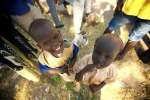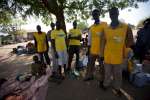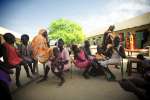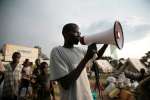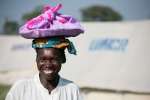Growing insecurity triggers new South Sudan displacement
News Stories, 8 January 2016
GENEVA, Jan 8 (UNHCR) – The UN Refugee Agency is increasingly concerned at recent growing insecurity in South Sudan's southern state of Western Equatoria and its serious impact on the civilian population there.
UNHCR cautioned that localized fighting between armed groups and government soldiers and an apparent breakdown in law and order are being reported in and near Yambio, some 300 kilometres west of Juba.
"Sporadic gunfire is commonplace, and there has also been an increase in crime involving car-jackings, attacks on government property, looting of civilian homes and sexual assaults reportedly by armed youth," UNHCR spokesperson Adrian Edwards said in a briefing to reporters in Geneva on Friday (January 8).
A recent UN mission to Yambio found nearly 200 houses burnt down in the neighbourhood of Ikpiro and several hundred others looted. People have taken refuge in the town centre or moved to nearby villages, Edwards said, adding that UN estimates put the number of people displaced in Western Equatoria's Yambio and Tambura counties at 15,000 since the start of December.
The violence is also driving people to flee their homes and head hundreds of kilometres to the south-east into neighbouring Uganda, where 500 refugees have been registered every day since the beginning of this week – a quadrupling in recent numbers. As well as the violence, refugees cite food insecurity due to failed crops as a reason for their flight.
Last month, UNHCR reported that fighting between local groups known as the "Arrow Boys" and the South Sudan army in Western Equatoria had displaced over 4,000 people into a remote region of north-eastern Democratic Republic of the Congo.
As of last Friday, the number of registered new arrivals, most in the area around Dungu, had risen to 6,181 comprising 4,164 South Sudan nationals and 2,017 Congolese who had previously been living as refugees in South Sudan. The influx has continued so far into 2016, albeit at a much reduced rate. The government refugee agency has recorded 268 in the past week.
"Overall, these are alarming developments for a region of South Sudan that has until now been relatively stable. The implications for humanitarian access to some 7,400 refugees living in Western Equatoria are very worrying," Edwards said.
UNHCR is in contact with government authorities regarding the security of those refugees and has negotiated additional UN peacekeeper protection through patrols as well as support to relocate refugees to safer areas.
Meanwhile UNHCR, Government of Uganda and partners are scaling up operations in northern Uganda in the expectation that this trend will continue, at least in the short-term.
The conflict that erupted in South Sudan in December 2013 has produced one of the world's largest humanitarian emergencies with 2.3 million people forced to flee their homes, 650,000 of these across borders as refugees and 1.65 million displaced inside the country.













